-
 Bitcoin
Bitcoin $76,479.4701
-3.52% -
 Ethereum
Ethereum $1,469.1142
-5.46% -
 Tether USDt
Tether USDt $0.9993
-0.03% -
 XRP
XRP $1.7902
-4.83% -
 BNB
BNB $551.0674
-0.78% -
 USDC
USDC $1.0003
0.02% -
 Solana
Solana $105.4201
-1.56% -
 TRON
TRON $0.2301
0.50% -
 Dogecoin
Dogecoin $0.1423
-4.38% -
 Cardano
Cardano $0.5589
-4.51% -
 UNUS SED LEO
UNUS SED LEO $9.0173
0.56% -
 Toncoin
Toncoin $3.0027
-2.56% -
 Chainlink
Chainlink $10.9146
-4.73% -
 Stellar
Stellar $0.2207
-4.45% -
 Avalanche
Avalanche $16.1527
-4.24% -
 Shiba Inu
Shiba Inu $0.0...01066
-6.81% -
 Sui
Sui $1.9318
-3.99% -
 Hedera
Hedera $0.1462
-4.08% -
 MANTRA
MANTRA $6.2098
-1.18% -
 Dai
Dai $1.0001
0.01% -
 Bitcoin Cash
Bitcoin Cash $268.3547
-2.84% -
 Polkadot
Polkadot $3.3678
-6.32% -
 Litecoin
Litecoin $69.1437
-2.09% -
 Ethena USDe
Ethena USDe $0.9986
-0.03% -
 Bitget Token
Bitget Token $3.9888
-4.59% -
 Hyperliquid
Hyperliquid $11.6557
0.72% -
 Pi
Pi $0.5672
-1.97% -
 Monero
Monero $196.0247
-4.01% -
 OKB
OKB $51.1597
0.14% -
 Uniswap
Uniswap $4.7818
-6.32%
How can the income from pledge mining grow through reinvestment?
Reinvesting cryptocurrency staking rewards accelerates returns via compounding, but diversification across platforms and understanding tax/market implications are crucial for maximizing profits and mitigating risk.
Mar 20, 2025 at 12:42 pm
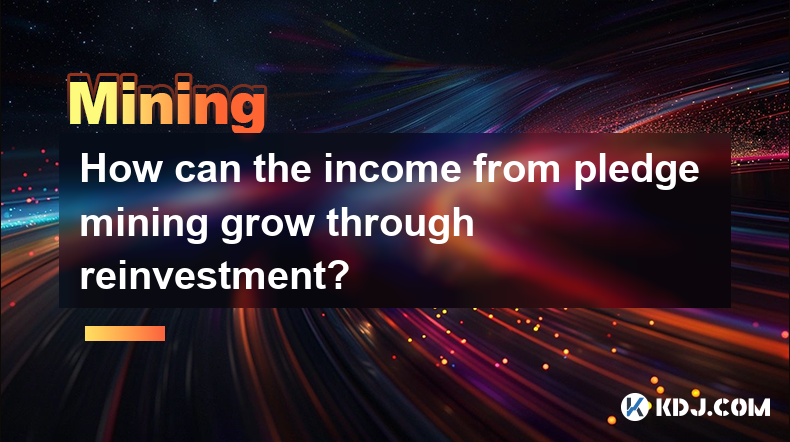
Key Points:
- Reinvesting staking rewards accelerates compound interest, significantly boosting long-term returns.
- Diversification across multiple staking pools mitigates risk and potentially increases overall yield.
- Careful selection of staking platforms is crucial for security and maximizing returns.
- Understanding the implications of inflation and network dynamics on staking rewards is essential for strategic reinvestment.
- Tax implications of reinvesting staking rewards vary by jurisdiction and require careful consideration.
How Can the Income from Pledge Mining Grow Through Reinvestment?
Pledge mining, or staking, offers a passive income stream in the cryptocurrency world. However, simply withdrawing rewards doesn't maximize potential profits. Reinvesting these rewards, a process often referred to as compounding, is key to exponential growth. This involves automatically adding your earned staking rewards back into your staked balance, generating even more rewards on a larger principal amount over time. The more frequently you reinvest, the faster your earnings accumulate.
The power of compounding lies in earning interest not only on your initial investment but also on the accumulated interest itself. This creates a snowball effect, with your earnings growing exponentially over time. For example, if you stake 1 BTC and earn 5% annually, reinvesting that 0.05 BTC will increase your staked amount, leading to higher rewards the following year.
Diversification plays a vital role in maximizing your returns while mitigating risks. Instead of staking all your assets in a single cryptocurrency or platform, consider spreading your investments across multiple projects. This strategy helps to reduce the impact of any single project's performance on your overall portfolio. Each cryptocurrency has its own unique characteristics and reward structures.
Choosing the right staking platform is crucial for security and maximizing returns. Prioritize reputable platforms with a proven track record of security and transparency. Research the platform's reputation, its security measures, and its user reviews before entrusting your assets. Look for platforms with competitive staking rewards and low fees. Avoid platforms with questionable security practices or a history of issues.
Understanding the underlying economics of the cryptocurrency you're staking is essential for long-term success. Inflationary pressures can impact the value of your rewards over time. Network dynamics, such as changes in the number of validators or updates to the protocol, can also affect your staking returns. Stay informed about the projects you're invested in to make informed reinvestment decisions.
Tax implications are a critical factor to consider. The treatment of staking rewards for tax purposes varies significantly depending on your jurisdiction. Some countries may consider staking rewards as taxable income, while others may have different rules. It is crucial to consult with a tax professional to understand your specific tax obligations related to staking and reinvestment. Proper accounting of your staking rewards is crucial for accurate tax reporting.
Reinvesting rewards requires a strategic approach. You'll need to carefully balance risk tolerance, potential rewards, and the complexities of managing multiple staking positions. Tracking your progress is vital, allowing you to adjust your strategy based on market conditions and your individual goals. This ongoing monitoring ensures your reinvestment strategy remains aligned with your investment objectives.
Different strategies exist for reinvestment. Some individuals might choose to reinvest all rewards, maximizing the compounding effect. Others might opt for a partial reinvestment strategy, retaining some rewards while still benefiting from the growth potential of compounding. The optimal strategy depends on your individual risk tolerance and financial goals. A well-defined plan ensures that your reinvestment strategy remains consistent with your overall financial objectives.
The frequency of reinvestment also impacts overall growth. While daily or weekly reinvestment maximizes compounding, it might involve higher transaction fees. Consider the fees associated with each reinvestment to find the balance between maximizing returns and minimizing expenses. Regularly evaluate the cost-effectiveness of different reinvestment frequencies.
Security remains paramount when reinvesting staking rewards. Use strong passwords, enable two-factor authentication, and regularly update your security settings on all platforms. Be cautious of phishing scams and only interact with official websites and communication channels. Prioritize security practices to protect your investment.
Successfully growing income from pledge mining through reinvestment requires diligent planning, research, and careful execution. This involves not only choosing the right projects but also understanding the associated risks and tax implications. Staying informed about market trends and adjusting your strategy as needed are crucial aspects of a successful reinvestment plan.
Frequently Asked Questions:
Q: What are the risks associated with reinvesting staking rewards?
A: Risks include the volatility of cryptocurrency prices, potential security breaches on staking platforms, changes in network parameters affecting rewards, and unforeseen regulatory changes.
Q: How often should I reinvest my staking rewards?
A: The optimal frequency depends on the platform's fees and your personal preference. More frequent reinvestment accelerates compounding but may incur higher transaction fees.
Q: Are there tax implications for reinvesting staking rewards?
A: Yes, tax implications vary widely depending on your jurisdiction. Consult a tax professional for guidance specific to your situation.
Q: What is the best way to diversify my staking investments?
A: Diversify across different cryptocurrencies and staking platforms to mitigate risk and potentially increase overall yield.
Q: How can I find reputable staking platforms?
A: Research platforms thoroughly, check their security measures, read reviews, and consider their track record before investing.
Disclaimer:info@kdj.com
The information provided is not trading advice. kdj.com does not assume any responsibility for any investments made based on the information provided in this article. Cryptocurrencies are highly volatile and it is highly recommended that you invest with caution after thorough research!
If you believe that the content used on this website infringes your copyright, please contact us immediately (info@kdj.com) and we will delete it promptly.
- "Cardano (ADA) Price Could Dip Below $0.60, Following Previous Market Cycle"
- 2025-04-09 05:10:12
- BONK, the well-known meme coin, has risen over 35% in the last week, attracting meme coin investors in the market. So, what caused this rally?
- 2025-04-09 05:10:12
- Bitcoin (BTC) Investors May Not Exactly Feel It, but BTC Has Been a Relatively Good Bet
- 2025-04-09 05:05:12
- Donald's Bitcoin (DONBTC) Could Turn Early Investors into Multi-Millionaires, Like Shiba Inu (SHIB) and Dogecoin (DOGE) Did
- 2025-04-09 05:05:12
- 6 Upcoming Kraken Listings That Could Be the Next Big Thing in Crypto
- 2025-04-09 05:00:13
- COTI Unveils New Privacy-Focused Blockchain to Reshape Web3 Transactions
- 2025-04-09 05:00:13
Related knowledge
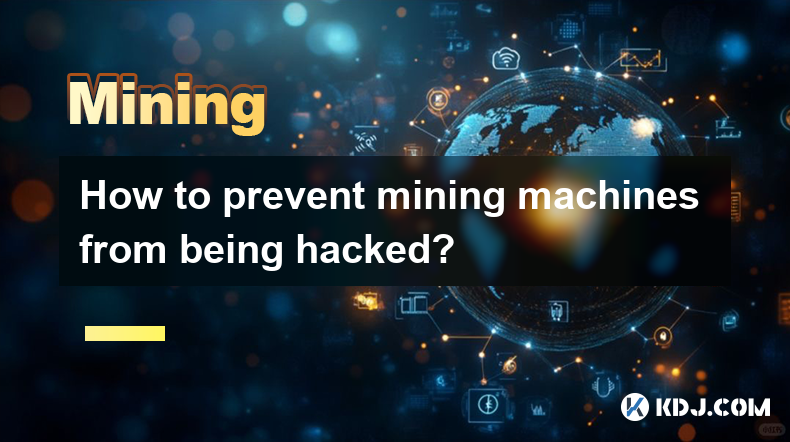
How to prevent mining machines from being hacked?
Apr 08,2025 at 09:00pm
In the world of cryptocurrency, mining machines play a crucial role in securing networks and validating transactions. However, these machines are also prime targets for hackers looking to exploit vulnerabilities for financial gain. Preventing mining machines from being hacked requires a multi-faceted approach that includes robust security measures, regu...
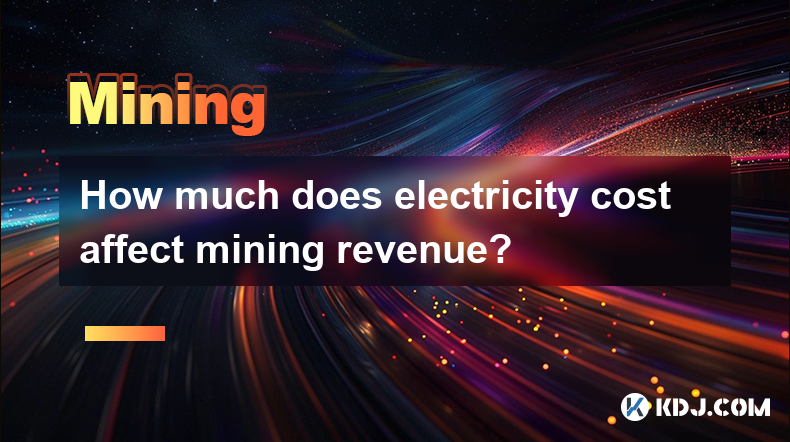
How much does electricity cost affect mining revenue?
Apr 08,2025 at 05:29pm
The cost of electricity plays a crucial role in determining the profitability of cryptocurrency mining. Mining revenue is directly impacted by the expenses incurred in running mining equipment, with electricity costs often being the most significant operational expense. Understanding how electricity costs affect mining revenue is essential for miners lo...
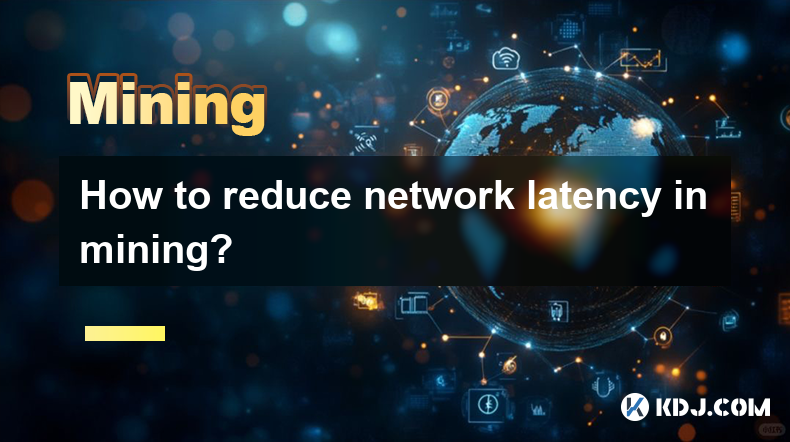
How to reduce network latency in mining?
Apr 09,2025 at 02:28am
Understanding Network Latency in MiningNetwork latency is a critical factor in the world of cryptocurrency mining. It refers to the time it takes for data to travel from its source to its destination across a network. In mining, lower latency can mean the difference between successfully adding a block to the blockchain and missing out on the reward. Red...

What is hashrate fluctuation?
Apr 08,2025 at 08:08pm
Hashrate fluctuation refers to the changes in the total computational power used by miners to process transactions and secure the blockchain network. This metric is crucial in the cryptocurrency world, particularly for networks like Bitcoin, Ethereum, and others that rely on proof-of-work (PoW) consensus mechanisms. Understanding hashrate fluctuation is...

Why does mining require a full node?
Apr 08,2025 at 06:49pm
Mining in the cryptocurrency world is a complex process that involves verifying transactions and adding them to the blockchain. One of the key components required for mining is a full node. But why is a full node necessary for mining? Let's delve into the reasons and explore the intricacies of this requirement. What is a Full Node?A full node is a progr...
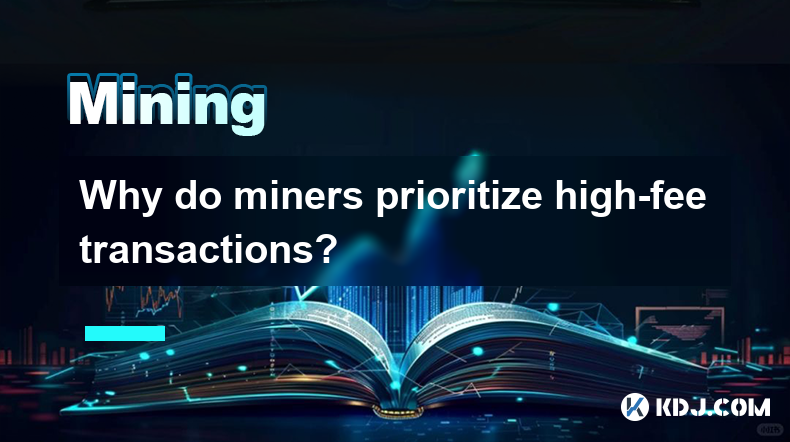
Why do miners prioritize high-fee transactions?
Apr 08,2025 at 05:01pm
Miners in the cryptocurrency ecosystem, particularly in networks like Bitcoin, play a crucial role in validating and adding transactions to the blockchain. One of the key factors that influence their decision-making process is the transaction fee associated with each transaction. Miners prioritize high-fee transactions primarily because these fees direc...

How to prevent mining machines from being hacked?
Apr 08,2025 at 09:00pm
In the world of cryptocurrency, mining machines play a crucial role in securing networks and validating transactions. However, these machines are also prime targets for hackers looking to exploit vulnerabilities for financial gain. Preventing mining machines from being hacked requires a multi-faceted approach that includes robust security measures, regu...

How much does electricity cost affect mining revenue?
Apr 08,2025 at 05:29pm
The cost of electricity plays a crucial role in determining the profitability of cryptocurrency mining. Mining revenue is directly impacted by the expenses incurred in running mining equipment, with electricity costs often being the most significant operational expense. Understanding how electricity costs affect mining revenue is essential for miners lo...

How to reduce network latency in mining?
Apr 09,2025 at 02:28am
Understanding Network Latency in MiningNetwork latency is a critical factor in the world of cryptocurrency mining. It refers to the time it takes for data to travel from its source to its destination across a network. In mining, lower latency can mean the difference between successfully adding a block to the blockchain and missing out on the reward. Red...

What is hashrate fluctuation?
Apr 08,2025 at 08:08pm
Hashrate fluctuation refers to the changes in the total computational power used by miners to process transactions and secure the blockchain network. This metric is crucial in the cryptocurrency world, particularly for networks like Bitcoin, Ethereum, and others that rely on proof-of-work (PoW) consensus mechanisms. Understanding hashrate fluctuation is...

Why does mining require a full node?
Apr 08,2025 at 06:49pm
Mining in the cryptocurrency world is a complex process that involves verifying transactions and adding them to the blockchain. One of the key components required for mining is a full node. But why is a full node necessary for mining? Let's delve into the reasons and explore the intricacies of this requirement. What is a Full Node?A full node is a progr...

Why do miners prioritize high-fee transactions?
Apr 08,2025 at 05:01pm
Miners in the cryptocurrency ecosystem, particularly in networks like Bitcoin, play a crucial role in validating and adding transactions to the blockchain. One of the key factors that influence their decision-making process is the transaction fee associated with each transaction. Miners prioritize high-fee transactions primarily because these fees direc...
See all articles






















































































